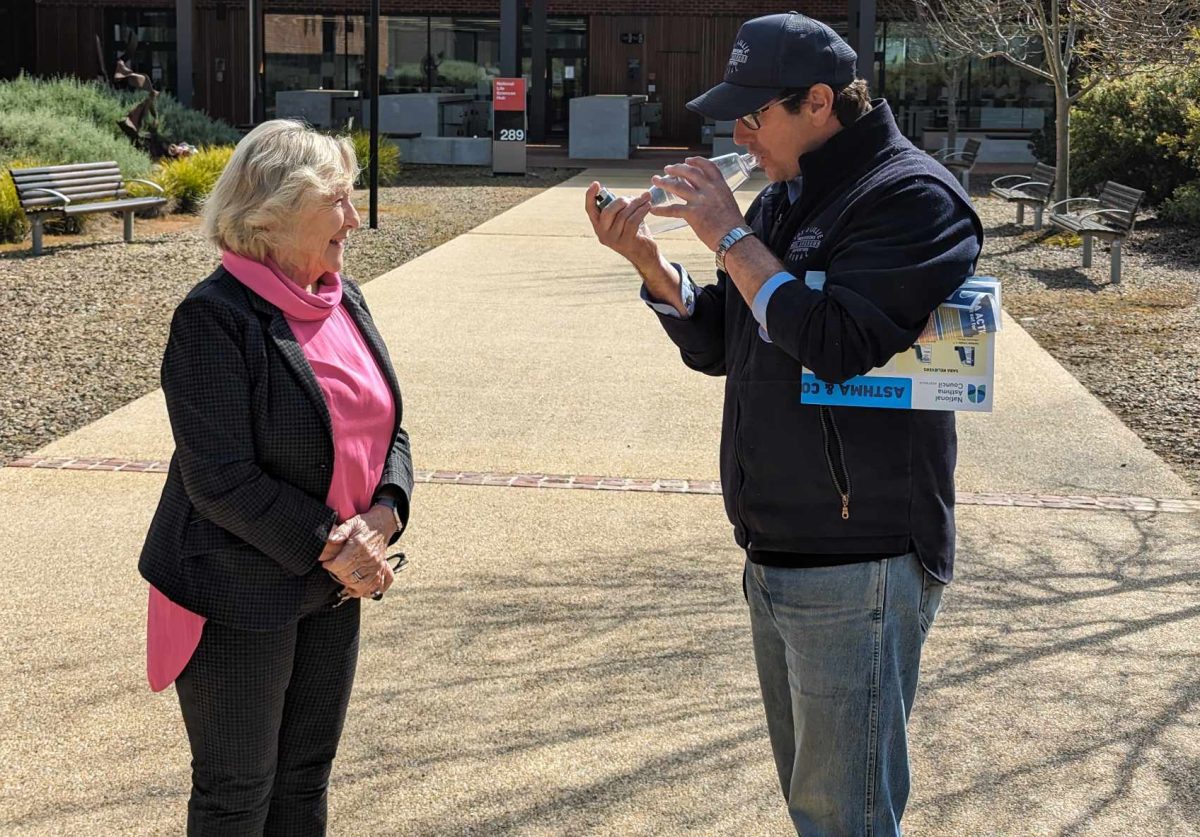
Thunderstorm Asthma Collaborative Chair Robyn Paton and Jeff Angel demonstrate the importance of using Ventolin correctly this spring. Photo: Jarryd Rowley.
The Thunderstorm Asthma Collaborative has launched its Spring Thunderstorm Asthma campaign to remind Riverina residents to have an asthma plan in place for the hay fever season.
Wagga Wagga has one of the highest percentages of people with asthma in the country, and with high pollen counts in the region and growing research into the risks of thunderstorms, MLHD is urging families to be prepared.
Thunderstorm Asthma Collaborative Chair Robyn Paton believes it is vital to educate the community about the symptoms and causes of asthma and hay fever to best prevent hospitalisations.
“It’s important that people manage their hay fever, their sinus and any other allergies, as well as the asthma if they know they’ve got a diagnosis,” Ms Paton said.
“In the Riverina, we’re in a bit of a bowl surrounded by crops and farming communities. We also have a tendency for high pollen counts as well as thunderstorms.
“That’s why it’s so important that the whole community is alerted that those who know they have problems, go to their GP and make sure that their asthma action plans are updated, which is so important.”
Ms Paton detailed the signs people should look for in the case of a potential asthma attack.
“They start to feel short of breath, tightening of the chest, coughing episodes, they might also feel that they’ve got a wheeze and they just feel this chest soreness,” she said.
Other symptoms include red and sore eyes, an itchy throat, and swelling of the face and neck.
“If the person suffering the symptoms takes their Ventolin puffer and it doesn’t work within half an hour and the symptoms persist, it’s then time to prevent further complications by taking them to the hospital for treatment.”
MLHD Disaster Manager Denise Garner’s role is to provide hospitals and health partners with updates about potential upcoming health risks including high-risk asthma and hay fever periods.
“This year, there is a bit more of a heightened risk compared to previous years,” Ms Garner said.
“We have similar climate conditions to when Victoria saw a significant thunderstorm asthma event, that’s why we have launched this campaign today instead of during the danger period which starts from 23 October to 20 November; it gives hospitals, schools, army bases and other places of risk the best chance to pre-plan.”
MLHD can report potential climatic events up to 48 hours in advance, allowing hospitals to be on alert during danger periods.
“We’re all aware of the risks during spring, it’s important for families to see their GPs, update their asthma plans and educate themselves on the first aid requirements for somebody who is suffering,” Ms Garner explained.
To learn more about asthma plans and risks during the spring period, click here.









